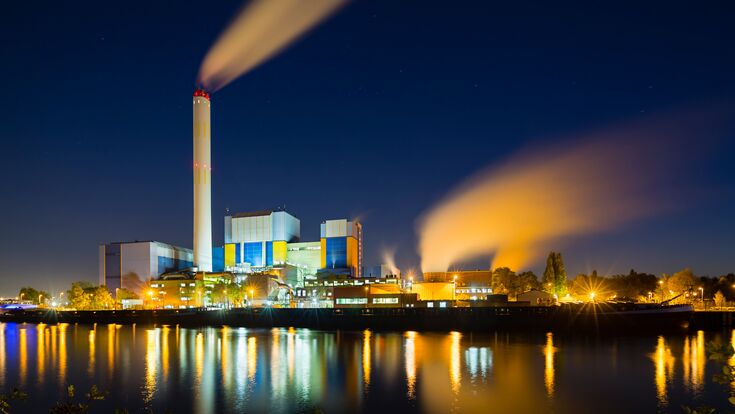Carbon Capture and Storage : Waste to Energy: An Industry reinventing itself

Carbon Capture and Storage may shape the Waste to Energy Industry.
- © IndustryAndTravel - stock.adobe.The matter is difficult. Anyone trying to get an overview of the carbon footprint of waste incineration inevitably ends up in a jungle of figures, statistics, graphs and comparisons from which it is difficult to distil a consistent picture.
In Norway, for example, around five per cent of energy requirements are covered by heat from waste incineration. At the same time, waste incineration accounts for around thirty per cent of CO2 emissions in the energy sector. However, this is not because the waste incineration plants used in Norway are so bad, but because Norway is already very advanced in the decarbonisation of its energy industry. In absolute terms, the low CO2 emissions from thermal utilisation are still very significant in percentage terms.
Complicated data situation
However, the situation in Italy and many other continental European countries is very different. In Italy, waste incineration causes only five per cent of CO2 emissions in the energy sector, but also contributes only one per cent to energy generation. This is due to the fact that fossil fuels are still heavily utilised in Italy and, against this background, the share of waste incineration in CO2 emissions is modest.
Further Reading (German): Müllverbrennung reloaded
And to complicate things further: If Italy and Norway were to utilise less waste in waste incineration plants, this would not necessarily have a positive effect on the CO2 balance. At least not if the waste were to be stored in landfills instead, where it would release the greenhouse gas methane.
For this reason, the EU clearly favours thermal recovery over landfill where recycling is not possible. This is also why China is currently investing heavily in incineration. (For background information, see box).
Big opportunity: carbon capture and storage
And yet: operators of waste incineration plants are also faced with the challenge of minimising CO2 emissions into the atmosphere. One way of achieving this goal is carbon capture and storage (CCS) - the capture of CO2 and its subsequent binding either in products or in underground storage facilities.
After initial resistance, mainly due to the argument that CCS counteracts efforts to reduce CO2 emissions, there is now a broad consensus that this technology will be necessary even if CO2 emissions are reduced as far as possible. Stuart Haszeldine, a geologist and pioneer of CCS technology who teaches in Edinburgh, has therefore concluded: "You can reduce the amount of hydrocarbons used, use them more efficiently, and there will still be a need to store carbon underground safely and for a long time."
EU creates binding requirements
The EU is therefore now committed to carbon capture and carbon storage, even though it defines the avoidance of CO2 and the reduction of fossil fuels as its primary climate target strategy. Based on these premises, the European Commission has stipulated in the Net-Zero Industry Act that annual carbon storage capacities of 50 million tonnes are to be created in Europe by 2030. As the Commission explains, this figure should not be seen as a mere recommendation, but as a binding target.
However, carbon storage is still a technology that is still in the development phase. Norway is a pioneer in this respect, promoting CCS projects in various sectors, including waste management, via the public Longship programme. The best known of these is the Klemetsrud waste incineration plant in Oslo. If the project proves to be viable, Klemetsrud could become the world's first waste incineration plant with a negative carbon footprint. It would bind more CO2 than it emits. The concept would also be scalable to around 500 plants of a similar size throughout Europe.
Cost issue dampens optimism
The fundamental technical feasibility of the project is beyond dispute: In a pilot project, it has been possible to process the CO2 capture in such a way that it is stable and transportable. The transport itself is initially to take place by rail to the port of Oslo and then by tanker to the storage sites in the North Sea.
However, the high costs led to a significant slowdown in work on the project in April of this year. An updated estimate, the operators wrote in a press release in the spring, showed that a sharp rise in prices, geopolitical instability and a fall in the exchange rate of the Norwegian krone made it necessary to lead the project into what is described as a cost-cutting consolidation phase.
At the same time, however, the operators emphasise that the project should not be put on ice forever: "Our clear goal is still to establish CO2 capture at the Klemetsrud waste incineration plant, but we need to adjust the path to the goal," says Knut Inderhaug, Managing Director of the operating company Hafslund Oslo Celsio.

